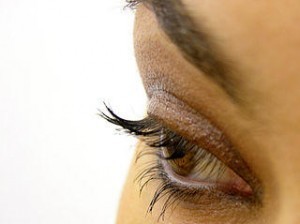Wavy Lines In Vision (Zig Zag), Causes and Treatments
Most of us take our vision for granted, as we do with our other senses. Common vision problems like short-sightedness are easily corrected these days with spectacles, contact lenses or quick and inexpensive laser surgery. We no longer see these vision-related problems as a hindrance. However, when vision is disturbed in other ways like clouding, narrowing or even blurring that cannot be corrected with lenses or surgery, we often get concerned about the more serious eye-related problems. Wavy lines may be one such cause for concern.
Meaning of Wavy Lines in Vision
Visual acuity means that images can be seen clearly and are well defined. There is a limitation to human vision but well-lit images that are within a reasonable distance should be ‘crisp and clear’. This is enabled by a combination of factors involving the eye, nerves and brain.
When people complain about wavy lines in their vision, they usually refer to straight lines looking wavy or zig-zagged. This disturbance is known as metamorphopsia. At other times wavy or zig-zag lines may surround an isolated spot of distorted vision. It is not uncommon for some people to describe blurred vision or even clouded vision as causing images to seem wavy.

It is important to understand how human vision works to further understand where problems may arise. Light enters through the cornea (the clear front part of the eyeball) where it is partially bent (refraction). It is then further bent by the lens to ensure that a clear image is focused on the retina, the inner lining of the eye.
The macula is the oval-shaped area of the retina which is responsible for visual acuity. The light stimulates receptors in the retina, which is then converted into nerve impulses that are relayed to the brain. It is in the visual centers within the brain that these impulses are ‘decoded’ to provide the sense of vision.
Causes of Wavy Vision
Although there are many different conditions that may cause visual disturbances which could be described as wavy, the two conditions where wavy lines is a distinct symptom are macular degeneration and ocular migraines. Visual disturbances are usually constant and worsen over time in macular degeneration but it is episodic meaning that it comes and goes in ocular migraines. These two conditions have been discussed in detail below but there may be other causes of visual disturbances.
Wavy Lines in Macular Degeneration
Macular degeneration is a chronic eye disorder where the macula gradually deteriorates. It is the leading cause of blindness in the developed world. There are two types of macular degeneration – dry and wet. Dry macular degeneration is the more common type.
The macula tissue becomes thin and breaks down over time. Wet macular degeneration is largely the same at the outset and then the retinal blood vessels begin to leak out fluid and blood. Age is one of the major risk factors and the condition most commonly occurs in older people. The exact cause of macular degeneration is unknown.
Wavy lines are not the only symptom of macular degeneration. There may also be:
- Difficulty adapting to changes in light intensity (bright to dim and vice versa).
- Haziness, blurring or even blind spots.
- Inability to read or do other close activities without bright light (dim vision).
- Dullness of colors.
- Hallucinations usually of geometric shapes.
The seriousness and prevalence of macular degeneration means that it should first be excluded when wavy lines in the vision appear. Early diagnosis and treatment may slow down the progression of the condition to some extent.
Wavy Lines In Ocular Migraine
Ocular migraines refer to the vision loss or disturbances that may accompany migraine headaches in some instances. It is a rare condition affecting less than 1% of people who suffer with migraine headaches. The visual disturbances are temporary, lasting anywhere between 4 to 72 hours.
The exact cause of ocular migraines is unknown but it is thought to be associated with spasms of the retinal blood vessels or disturbances in the nerves carrying impulses from the retina. There is some evidence indicating the the visual disturbances may be due to other problems.
As with macular degeneration, wavy lines are not the only visual symptom of ocular migraine. There may also be:
- Unusual sensitivity to light
- Blind spots in the visual field
- Flashing lights
- Loss of vision in one eye only.
In addition there are the other migraine headache symptoms like the pain, nausea, vomiting (sometimes) and a host of mental symptoms that often accompany the headache. It is important to note that flashing lights and blind spots are common symptoms of an aura that may precede a migraine headache. However, this does not mean that it is an ocular migraine.

Treatments of Wavy Lines
Wavy lines in the vision is a symptom of an underlying problem. Therefore any treatment has to target the root cause in order for the symptoms to subside.
Medication
The treatment options for ocular migraines are largely the same as it is for migraine headaches in general. This may include a combination of NSAIDs, anti-epileptics and tricyclic antidepressants. Since the visual disturbance is temporary and does not cause any long term complications, specific treatment is usually not necessary.
Supplements
The treatment for macular degeneration on the other hand may involve a different options. Firstly a combination of micronutrients (vitamins and minerals) may slow down or prevent the condition from getting worse. However, it cannot restore the loss of vision that has already occurred. This vitamin-mineral formula is known as AREDS but there are now some variants which may also be helpful. Smokers should firt speak to a doctor or pharmacist before commencing with this supplement.
Surgery
The surgical treatment options for dry macular degeneration is very limited. Some people with advanced cases may be suitable for the implantation of telescopic lenses. However, there are several surgical options for people with wet macular degeneration. It may involve laser surgery or the injection of drugs into the eye which can then destroy the leaky blood vessels. None of these options can cure wet macular degeneration, just as there is no cure for dry macular degeneration.
References
- Metamorphopsia. American Academy of Opthamology
- Retinal Diseases. Mayo Clinic





